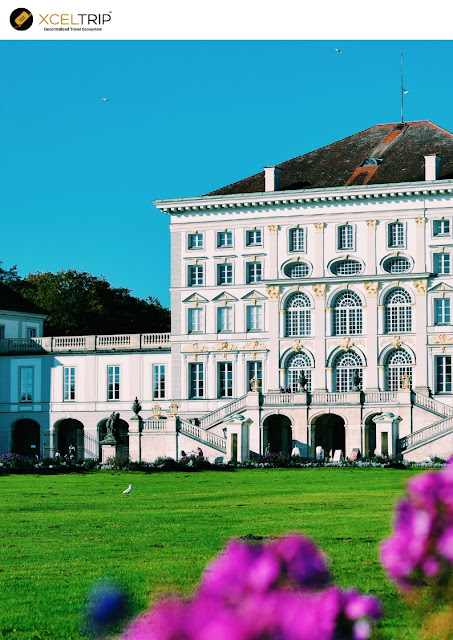Museo Nacional del Prado
The Prado
National Museum in Madrid contains flemish, italian and spanish art in
its collection. To date, the museum has about 8,600 works, but because of the
limited space can only show 2,000 paintings.
The Prado Museum of Fine Arts is
considered one of the largest and most significant not only in Spain,
but throughout Europe. About 2 million tourists
visit the Prado annually. His collection contains the largest number of works
of Spanish painting and sculpture in the world, collected over several
centuries.
The museum was officially opened on
November 19, 1819 by the founder
Isabella Braganskaya, wife of King Ferdinand VII, but the history of the
collection began much earlier. The first monarch who wished to preserve artistic
values and pass on to inheritance was Charles V (1500–1558). In those days,
the collection was available only to the nobility, and only a small part on
religious subjects - to the general public. Already later, in 1785, a place was
set aside for a public museum in the large Prado Park, after which this museum
was named.
Today, the collection has more than
8,000 paintings, but due to lack of space, only about 2,000 works are
exhibited. In addition to the paintings, the collection includes more than 400
sculptures and numerous jewels.
The Prado Museum presents the
largest collection of Spanish painting in the world. You can begin to get
acquainted with it from the 11th century - in front of you are fragments of
Mozarabic frescoes from the church of San Baudelo de Berlanga. Further in the
halls, where works from the Spanish-Flemish Gothic to the Renaissance are
represented, you can see paintings by Bartolome Bermejo, Pedro Berruguete, Juan
de Juanes and Luis de Morales. In the halls dedicated to the work of El Greco,
are stored such masterpieces of this artist as "Knight with a hand on his
chest" and "Trinity".
The Golden Age is represented by
paintings by Ribera, Zurbaran and Murillo, which preceded the work of
Velasquez. The most famous masterpieces of this artist - "Menin" and
"Pryaha" - can also be seen in the Prado halls. In the halls
dedicated to Francisco Goya, who worked at the junction of the 18th and 19th
centuries, his works are presented: from cardboards for tapestries created for
the Royal Tapestry Manufactory, to “Gloomy Pictures”, which the artist painted
on the walls of his “House of the Deaf”. Some rooms are devoted to painting of
the XIX century. They can see pictures of Fortuny, father and son Madrazo, as
well as Sorolla.
Italian painting is important for
understanding the transition from medieval art to the Renaissance. In addition,
she had a great influence on Spanish baroque. Among the paintings of the
Quattrocento era (XV century), the “Annunciation” by Fra Angelico, the
Bottaccia series “The Novel of Nastajo degli Onesti”, the Assumption of the
Virgin by Mantegna and the Dead Christ Supported by an Angel by Antonella la
Messina deserve special attention. The heyday of classicism in the era of
Cinquecento (XVI century) is represented by several maidens of Raphael, and
paintings by Titian, Tintoretto and Veronese, the great artists of the Venetian
school, are among the most valuable exhibits of the Prado Museum. The various
directions of Italian Baroque are represented by works by Caravaggio, Guido.
The Prado collection has more than
8,000 paintings and 400 sculptures, they are exhibited alternately, the main
part is stored in the vaults. To inspect all the art of one day is not enough,
but you can start with the basic masterpieces. The path to them is indicated in
the plan of the museum, which can be taken free of charge. Among the most famous paintings are
the Meninas by Velasquez, The Portrait of the Caballero and The Adoration of
the Shepherds by El Greco, The Three Graces by Rubens, the Garden of Delights
by Bosch.
The Prado presents the gloomy
frescoes of the great Goya, painted by him on the walls of his house in Madrid
at the time of mental disorders. The most depressive of them is Saturn. Also in
the museum you can see the earlier works of the master, for example,
"Portrait of the Family of Charles IV." A connoisseur of human
weakness, Goya masterfully portrayed the true characters of the members of the
royal family.
In the halls you should find a copy
of the “Mona Lisa” by Leonardo da Vinci, made by his student. Unlike the famous
original, the list does not convey the mysteriousness and depth of the image of
Gioconda, but it is curious to look at it. In addition to painting, interesting
sculptures, for example, the ancient Roman statue of Orestes and Pylada.
Explore Museo
Nacional del Prado with XcelTrip and make unforgettable memories.




Comments
Post a Comment